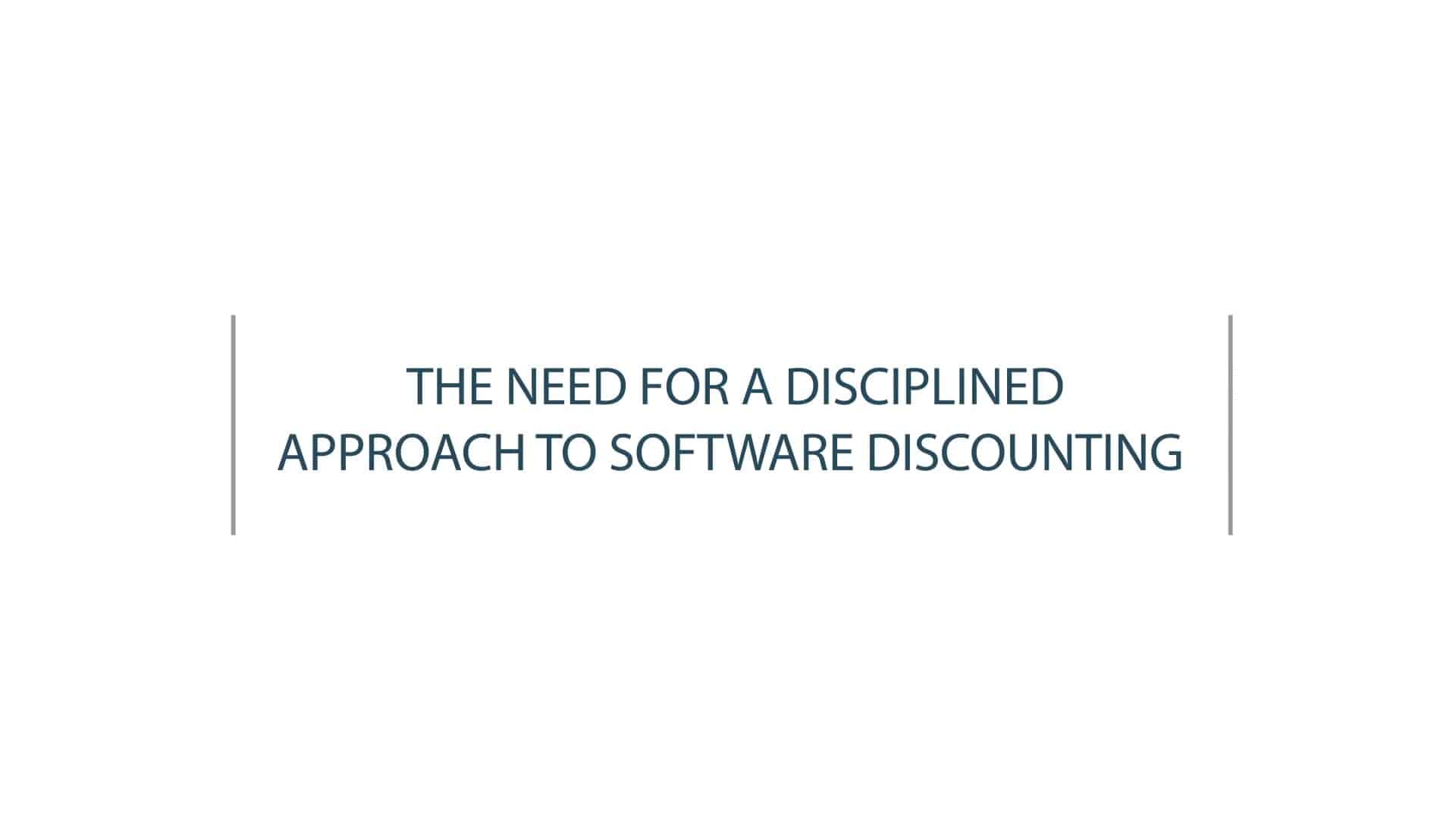Monetization innovations don’t happen overnight. For us, the first inroads to more effective pricing strategies were made decades ago, when our leadership invented the monetization scheme that we called the “floating license” (a.k.a. the concurrent user model). It was widely adopted by CAD and engineering software firms and is still in use today.
History lesson aside, Software Pricing Partners has taken the insights and innovations we began over 4 decades ago and built upon them to create our powerful, unique approach to pricing. Leveraging a proven three-step approach, our disciplined methodology provides our clients with the edge they need in today’s highly competitive software markets.
Our Proven 3-Step Approach
Stage 1: Out Analyze
Deep-dive into your technology and business
Successful software monetization strategies don’t happen in a vacuum. They start with a thorough understanding of your organization that is attained through real conversations with real people—not getting lost in tabulating reports, surveys, and other nonsense.
In this stage, we conduct B2B market research to include employee interviews, customer interviews, and competitor’s customer interviews. These allow us to truly immerse ourselves in your business and your world. At the end of this stage, we uncover the hidden roots of your company’s lost revenue and provide initial licensing and metric recommendations.
Stage 2: Out Think
Analysis & development of proposed strategy
In this development stage, we work to select a unified licensing approach for all software products and structure the payment stream. Armed with the context gained in Stage 1, we carry out a thorough analysis of your data.
We analyze critical capabilities, conducting working sessions to look at the possibility of tiering products and we analyze historical transactions to identify other bundling and packaging opportunities.
We customize our proven discounting approach to enable deals to scale appropriately with the value delivered. We then perform an impact analysis to identify potential ramifications and scenarios of pricing changes. We identify thorny customer transition challenges and help craft upgrade paths from old world pricing to new world monetization. Finally, we build a monetization model and an example deal estimator to be operationalized by our clients in their sales/quoting system of choice.
Stage 3: Out Execute
Rollout and revision
In this stage, we help companies prepare for the rollout of their new revenue model. Here, we assist with iterative packaging and pricing to refine the model.
Our process is iterative, with ongoing tweaks and adjustments made throughout the rollout as the cloud offering evolves and more transaction data is generated. Along the way, we help our clients with critical deal negotiation using their new model until they can demonstrate that they are comfortable with the new approach.
The Price of Success
Simply put, pricing is the most critical decision a software company can make before a product launch. No other variable under management’s control is more effective at creating revenue and overall business value–or destroying it. Yet how to license, package and charge for software capabilities and services remain the most under-exploited aspects of the software business model.
Pricing strategy today is typically an afterthought—a guess early on by founders instead of a disciplined analysis by seasoned executives. Too often, pricing only comes into full focus when there’s a perceived “pricing problem.” The critical and complex decisions necessary for a successful pricing strategy are typically put on the back burner until these systemic issues in pricing begin to affect revenue growth. That’s too late.
Software companies notoriously focus instead on costs, undervaluing their solutions along the way. Worse yet, they confuse value-based pricing with charging what the market will bear, resulting in market fairness issues where customers that bought the same thing often pay different prices.
While rolling out new pricing approaches can feel fun and exciting when first starting out, the lack of a disciplined process to triage the myriad of pricing strategy issues can create large distractions for management at a time when they should be focused on executing in the marketplace.

Proven. Proactive. Profitable.
At Software Pricing Partners, we understand the pitfalls that improper pricing strategies can have on today’s software companies. Our DNA dates back to the inception of the industry as a whole.
Over the years, we’ve harnessed and expanded this insight to develop a proven, proactive process and framework. Unlike typical pricing models, our monetization models take a holistic view on pricing, providing today’s forward-thinking executives with the purpose-built pricing strategies they need to generate critical revenue and meet their profit potential.
The difference between traditional pricing and strategic monetization:
Outdated Pricing Methods
-
Narrow focus, typically on one application of a product line and its associated pricing tiers. Tendency to get caught up in mechanics and administration.
-
Short-term focus on pricing the here and now, fighting fires – often driven by a pressing deadline.
-
Majority of time spent finding things to charge for and then determining “the number”.
-
Lacks an orderly process to explore offering structures and packages. Tendency is to start with product specs.
-
Primary dialogue is around pricing tiers and website pricing pages.
-
“Big deal” focuses on amounts paid and rarely takes into account other value trade-offs.
-
Predominant focus on willingness to pay, surveys and other unproven techniques that fall victim to bias.
-
Black box, cookie-cutter approach that munges B2C and B2B pricing techniques, creating inaccurate findings.
Our Monetization Approach
-
Broad focus ensuring monetizing fits all of a software company’s products and services.
-
Price setting is viewed as just one part of the SPP Monetization Framework.
-
Looks to monetizing the product roadmap, including future products and services as well as related products and services (including partners).
-
Heavy focus on balancing simplicity vs. precision for ease of use and understanding across customers, sales and marketing.
-
Uses a structured process for deep exploration of product and service bundling to more fully address customer segments and needs.
-
Price levels and discounts are only developed after it is clear what is adding value and how value is delievered.
-
Addresses big deal scalability with discount schedules, volume roll-outs and other creative ways to attract and keep game-changing clients.
-
100% focus on how B2B buyers perceive value and use software across SMB, mid-market and enterprise customers.
-
Your team learns our methodology, thought processes and techniques so they can package and price future versions of your product.
